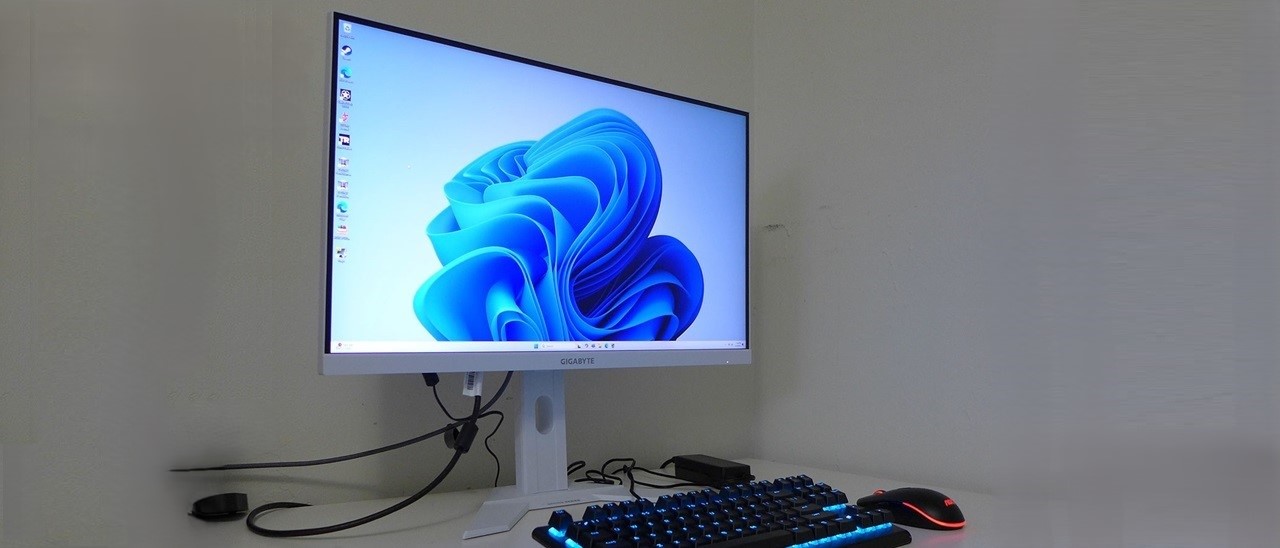Why you can trust Tom's Hardware
To compare the M27QA ICE’s performance, we have a group of 165 and 180 Hz QHD screens all in the 27-inch size. There’s Lenovo’s G27q-30, ASRock’s PG27QFT2A, Xiaomi’s G Pro 27i, Asus XG27ACS and Cooler Master’s GM2711S.
Pixel Response and Input Lag
Click here to read up on our pixel response and input lag testing procedures.
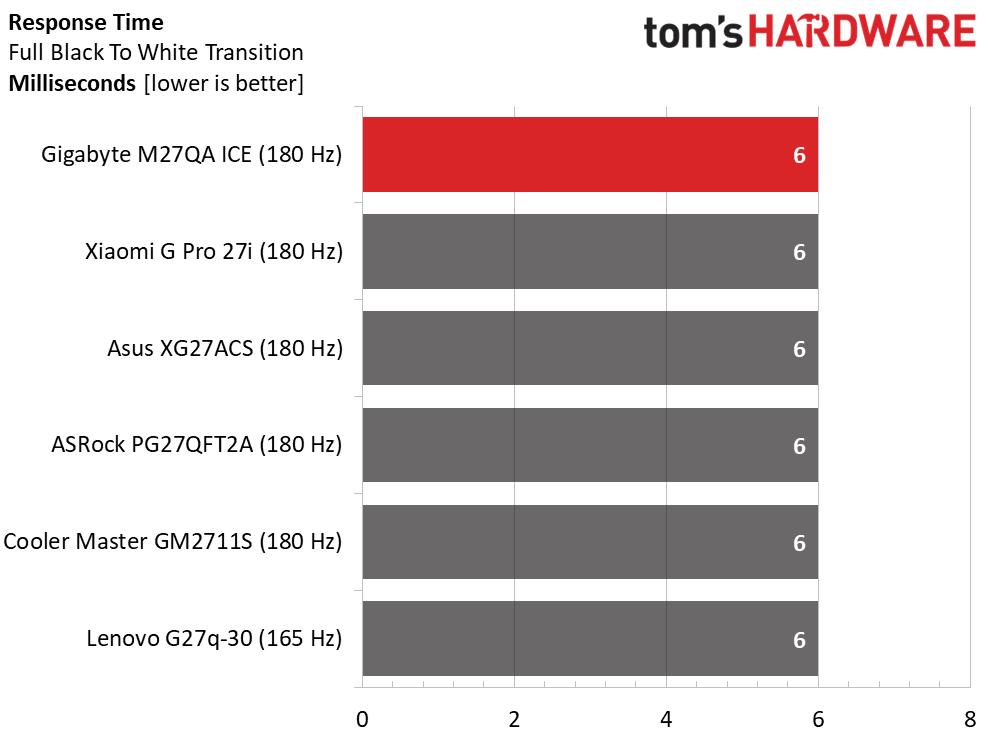
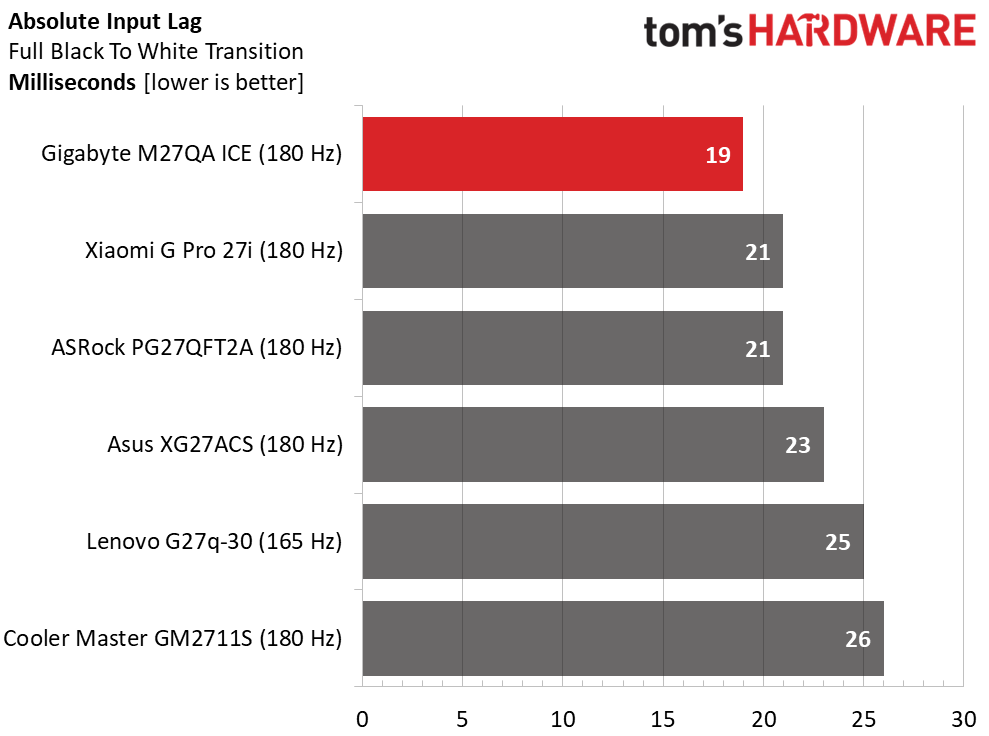
The response test indicates how smooth the moving image will be and all the screens here are on the same footing. There are slight differences in overdrive quality, and the M27QA ICE has the best implementation. It’s super smooth on its Balanced setting with almost no motion blur. You can remove all blur using the backlight strobe, but you’ll see a slight phasing artifact.
In the lag test, the M27QA ICE smokes the others with just 19ms total. That puts it on par with 240 Hz monitors and qualifies it for competition. Note that the 165 Hz Lenovo hangs close to the 180 Hz screens at 25ms total lag.
Test Takeaway: The M27QA ICE is one of the quickest and most responsive screens you can buy for less than $300. Its overdrive is nearly perfect, and it allows the backlight strobe and Adaptive-Sync to work together with no brightness penalty and only a slight phasing artifact. At 180fps, it’s on par with many of the 240 Hz screens I’ve reviewed. Only a much faster LCD or OLED will top Gigabyte’s offering.
Viewing Angles
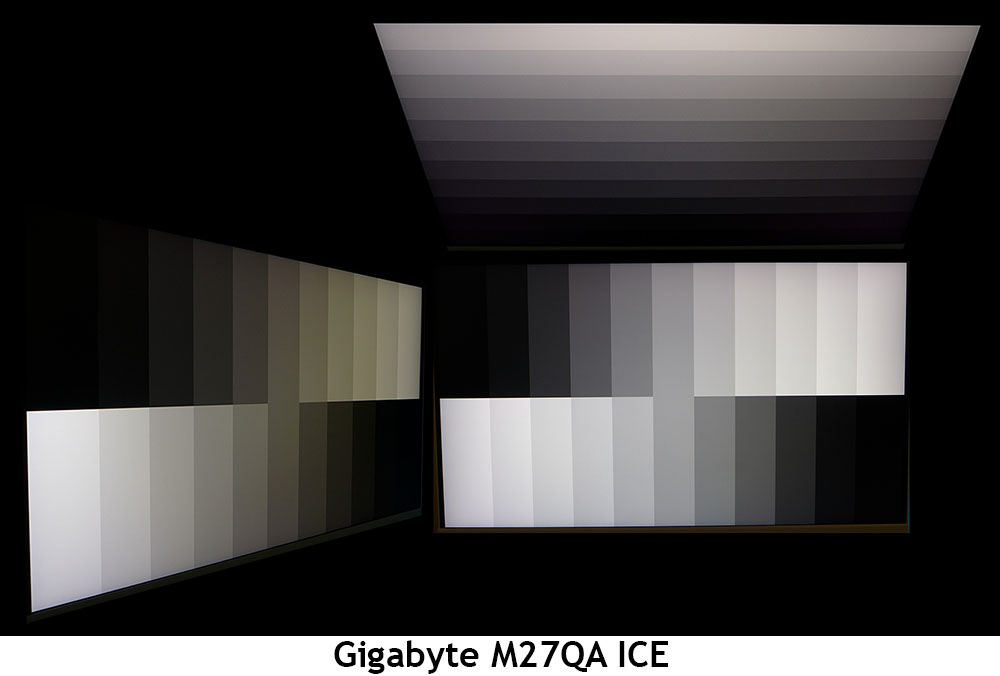
The M27QA ICE delivers decent performance in my viewing angle test. The side photo shows a green tint but no significant loss of light output. Gamma stays solid, meaning there’s no fine detail loss at 45 degrees off-center. The top view also has reasonable gamma with a slight red tint and 40% brightness reduction.
Screen Uniformity
To learn how we measure screen uniformity, click here.
Get Tom's Hardware's best news and in-depth reviews, straight to your inbox.
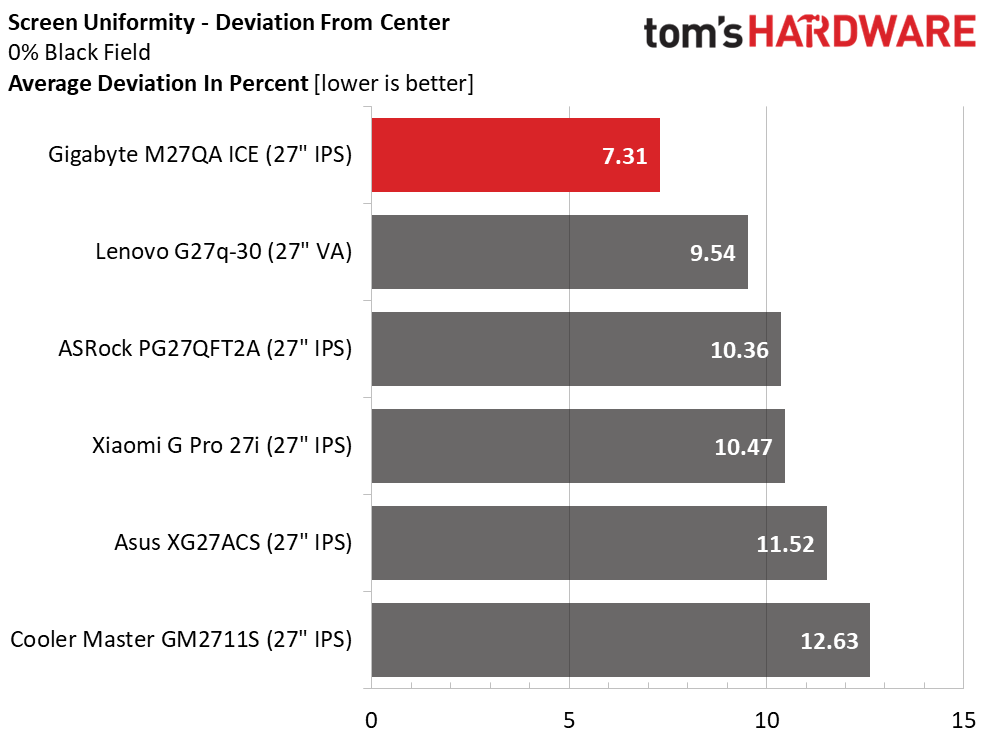
Some of the monitors in the group have visible glow or bleed, but not my M27QA ICE sample. It shows perfect uniformity in all color and grayscale field patterns. The black field has no sign of anomalies, just a smooth tone from edge to edge. This is excellent performance.
MORE: Best Gaming Monitors
MORE: How We Test PC Monitors
MORE: How to Buy a PC Monitor
Current page: Response, Input Lag, Viewing Angles and Uniformity
Prev Page Features and Specifications Next Page Brightness and Contrast
Christian Eberle is a Contributing Editor for Tom's Hardware US. He's a veteran reviewer of A/V equipment, specializing in monitors. Christian began his obsession with tech when he built his first PC in 1991, a 286 running DOS 3.0 at a blazing 12MHz. In 2006, he undertook training from the Imaging Science Foundation in video calibration and testing and thus started a passion for precise imaging that persists to this day. He is also a professional musician with a degree from the New England Conservatory as a classical bassoonist which he used to good effect as a performer with the West Point Army Band from 1987 to 2013. He enjoys watching movies and listening to high-end audio in his custom-built home theater and can be seen riding trails near his home on a race-ready ICE VTX recumbent trike. Christian enjoys the endless summer in Florida where he lives with his wife and Chihuahua and plays with orchestras around the state.
-
GeorgeLY Thank you for the review!Reply
Two comments:
1. Lack of the speakers is a pro, as monitor speakers are low quality and add to complexity, price and size.
2. The biggest problem is that they have ports wrong: it should've had 2 or more Display Ports and 1 HDMI. HDMI is for consumer electronics not for the computing, which further illustrated by HDMI consortium stance on the Open Source drivers.
